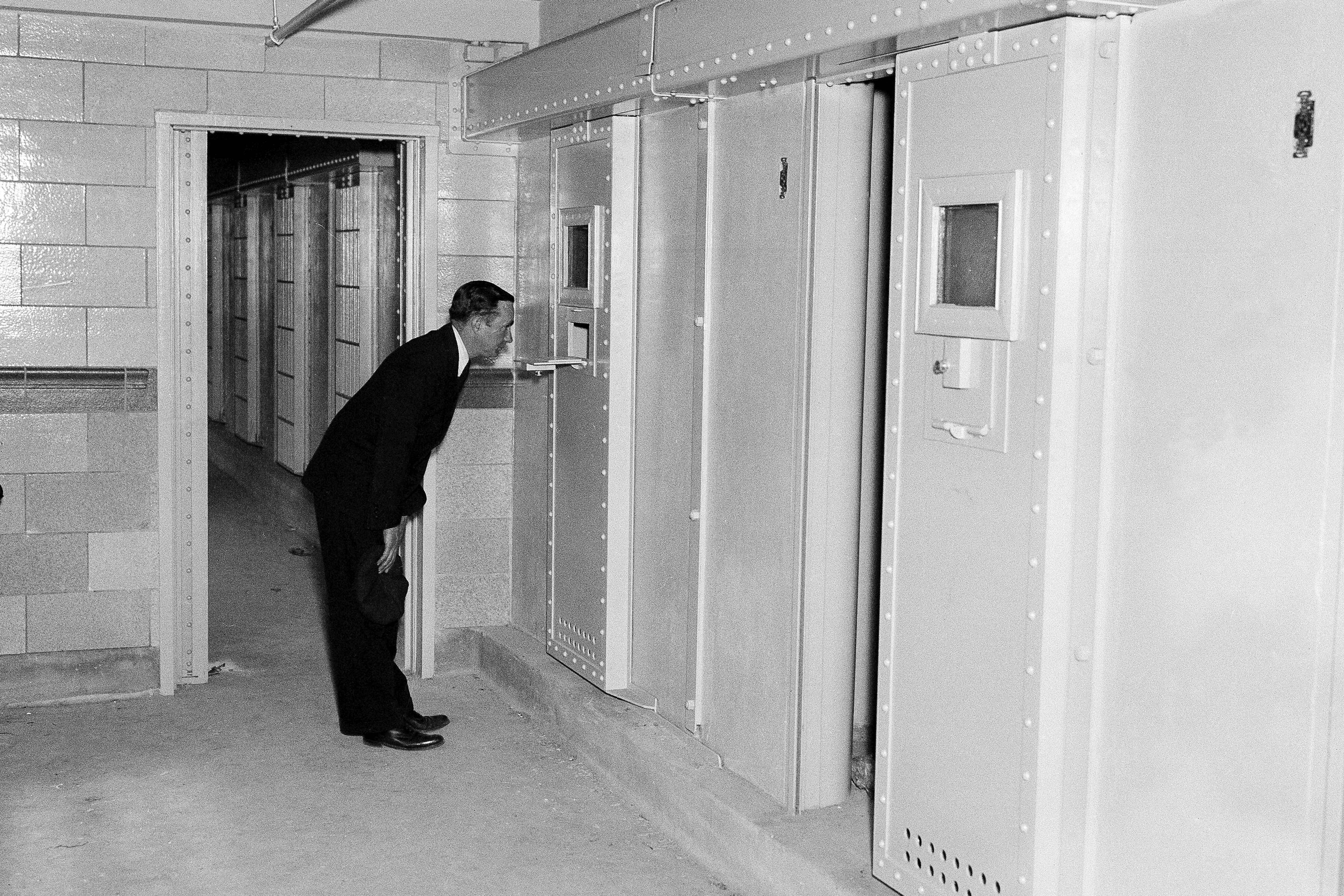Could solitary confinement on Rikers Island be laid to rest?
New York City officials have unveiled reforms they claim add up to a groundbreaking ban on solitary confinement on Rikers Island

Your support helps us to tell the story
From reproductive rights to climate change to Big Tech, The Independent is on the ground when the story is developing. Whether it's investigating the financials of Elon Musk's pro-Trump PAC or producing our latest documentary, 'The A Word', which shines a light on the American women fighting for reproductive rights, we know how important it is to parse out the facts from the messaging.
At such a critical moment in US history, we need reporters on the ground. Your donation allows us to keep sending journalists to speak to both sides of the story.
The Independent is trusted by Americans across the entire political spectrum. And unlike many other quality news outlets, we choose not to lock Americans out of our reporting and analysis with paywalls. We believe quality journalism should be available to everyone, paid for by those who can afford it.
Your support makes all the difference.Even with Rikers Island under renewed scrutiny for prisoner neglect and abuses, a transgender prisoner named Layleen Polanco died there in a tragic way — from an epileptic seizure, alone in a dingy cell.
Outrage over Polanco’s 2019 death in solitary confinement at the notorious New York City jail complex, one of the world's largest, helped set the stage for a proposed ban on an age-old disciplinary practice that prisoner advocates have long seen as barbaric.
This week, officials unveiled reforms that Mayor Bill de Blasio asserts add up to a groundbreaking abolishment of punishing unruly prisoners by isolating them.
One provision would require inmates who have been removed from the general population to still be out of their cells at least 10 hours a day.
“I came to the conclusion that we could end the confinement entirely, something that has been done in few places in this country,” the mayor said.
The announcement was greeted with skepticism by both a guard union and public defenders, for vastly different reasons.
Benny Boscio Jr., head of the Correction Officers’ Benevolent Associations, has called the proposal “a recipe for disaster” that would deny guards a key tool for dealing with a surge in violence on Rikers.
“It will send a message to violent and assaultive inmates … that City Hall condones these acts of terror against our officers and nonviolent inmates,” Boscio said.
The Legal Aid Society said the plan doesn’t go far enough to put an end to what it calls a “punitive segregation” system that lacks transparency.
“Subjecting people to punishment on the basis of vague or secret assessments that could keep them in restrictive settings indefinitely cannot be called progress,” said Mary Lynne Werlwas, director of the Prisoners’ Rights Project for Legal Aid.
The proposals “replicate some of the most inhumane features of the current system,” including chaining prisoners to desks all day in “small two-person cages," Werlwas added.
The solitary reforms come as the city is pursuing a sweeping plan to shutter Rikers by 2026 and replace it with four smaller jails intended to be more modern and humane. They also follow other measures eliminating bail for many lesser offenses as a way to address inequity and incarceration rates.
Polanco, 27, had been in custody for several weeks, unable to post $500 bail after an assault arrest. Her family said jail guards failed to check on her as she was dying from health issues they knew about.
In announcing the reforms, De Blasio also cited the widely reported case of Kalief Browder as a catalyst.
As a teenager, Browder spent two years in solitary confinement at Rikers Island — and three years in in jail overall — when he couldn't make bail on a charge that he stole a backpack. He never got a trial. Prosecutors dropped the charges and he was released, but with deep psychological scars. He killed himself in 2015.
The city ended up paying $3 million to settle a civil claim in the Browder case. Another $5.9 million was shelled out in the Polanco case.
The mayor called Browder’s death the “original sin” fueling a reform movement that had previously resulted in a ban on solitary confinement for 16- and 17-year-old inmates who broke jailhouse rules. That move followed a scathing Department of Justice report that found teenage inmates were too often placed in solitary confinement and beaten by jail guards.
The new plan takes an approach similar to the solitary ban for teens by segregating violent adult inmates into a setting geared toward rehabilitation, not isolation, officials said.
It would require prisoners to spend at least 10 hours a day out their cells, with contact with at least one other person. Five hours would be spent on rehabilitation programs under the supervision of case managers.
The city Board of Correction, an independent jail oversight group, still must hear public comment on the plan before it can be approved.
The board has already been contacted by people who say they remain traumatized by their treatment on Rikers. A state prison inmate, Lee Doane, wrote a letter urging the board to consider how the practice of “confining an individual 23 hours a day in an area the size of an elevator ... might not serve to make them a productive member of society.”
When you confine someone to a “cage,” Doane added, it leaves lasting harm over “the space between themselves and everything else.”